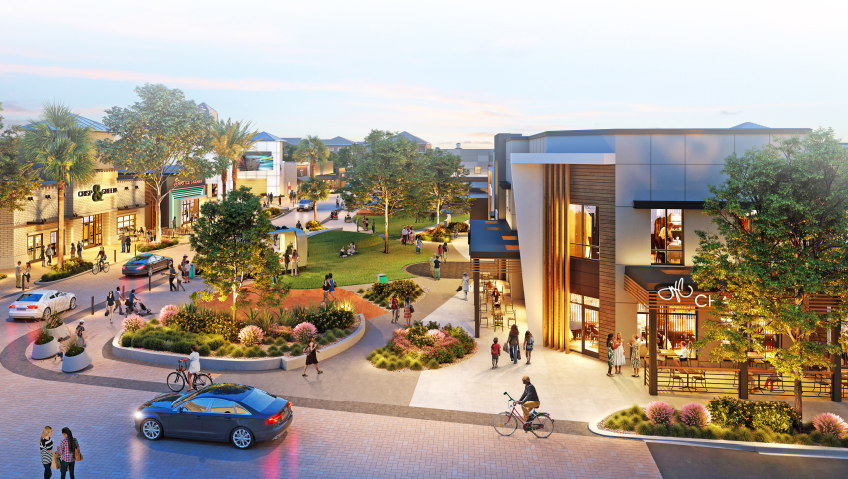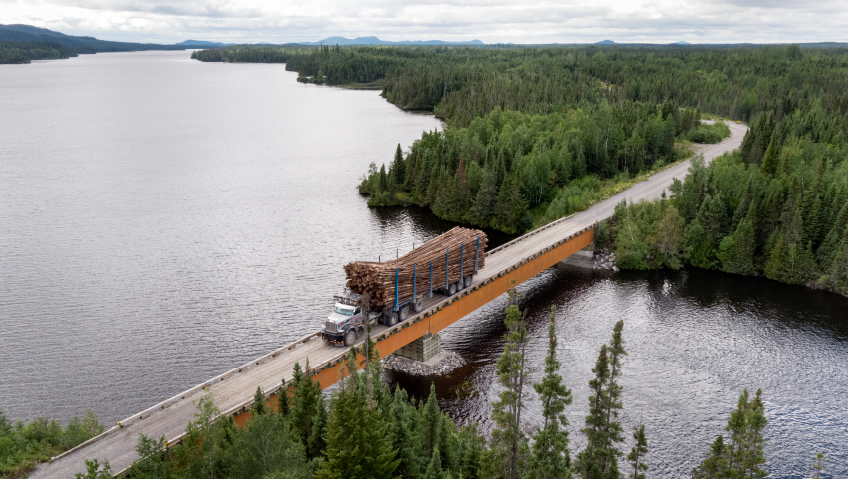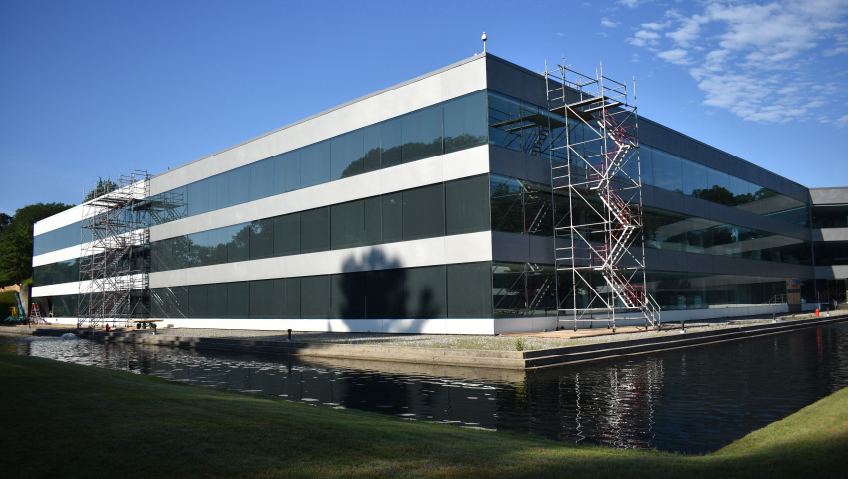Over the last four decades, Charlan Brock Architects has earned international recognition for producing marketable, buildable, and financially successful design solutions that have positively impacted the lives of more than one million people. Known as thinkers, collaborators, designers, and innovators, the Orlando, Florida-based team stays abreast of emerging trends and is at the forefront of creating sustainable, affordable communities.
The company got its start in 1980 when Butch Charlan and Gary Brock were out sailing and shared their hopes and plans for the future with one another. The young architects discovered they shared a passion for meaningful, purpose-filled projects that would make a real impact. They committed to launching a company together before the boat even made it back to the dock. One year later, Charlan Brock & Associates officially opened its doors.
Today, the company boasts a diverse portfolio of award-winning work, including high-rises, resorts, suburban apartments, modern student living, vibrant town centers, trendy mixed-use developments, and future-ready master-planned communities.
Whatever the project, the team strives to create buildings that empower the people who use them, carefully considering their aspirations and ideals throughout the design process. This might mean reimagining old concepts that no longer work—or perhaps never did to begin with. Take a classic shopping mall, for instance. “The mall typology—surface parking lot, big anchor stores—doesn’t quite fit people’s idea of convenience or good experience necessarily,” says Principal and Director of Business Development Matt Charlan.
This fact is particularly relevant now that people can opt out of non-user-friendly retail experiences. “You can get stuff delivered straight to your house. Why do you need to go to the mall?” And, of course, there is the negative environmental impact. “They’re surrounded by these big gray parking lots that just wash engine oil out into retention ditches that filter into the ground until they get to the drinking water,” Charlan points out. “That was not a good system and we’re all aware of that. So how do we fix it?” he asks.
“How do we progress forward?” Awareness is a big part of this answer. “A lot of what we do is being aware of the site conditions—there are the strengths, the weaknesses, the opportunities, the threats for that site and for the market in that site, how it’s addressed in the site. So we have to think holistically.” This mindful approach is especially true when it comes to green fields, in order to preserve natural resources.
Providing a variety of units within a building is another important way to ensure the structure meets the needs of the people who use it and to encourage a holistic community. “That will incentivize different people with different lifestyles to live in that community,” Charlan says. “So getting a resilient, heterogeneous type of community is really achieved by offering not just one bedrooms, two bedrooms, three bedrooms, and studios, but different types—some have larger kitchens. Some have walk-in closets.”
Of course, there are financial constraints to consider when expanding options. “The more variety that you offer and the more options you offer, the more complex the project gets and therefore the more costly it gets. So there is kind of a balance of that.”
Also worth noting is that, while the firm is offering different options for different lifestyles, “we’re still abiding by universal design, which is designing so that anybody can physically inhabit the space, and that’s also really challenging,” Charlan says.
Bigger builds may offer more room for variety and place-making. “Sometimes we have the opportunity on larger projects to spend a little bit more time thinking about those opportunities,” he says. Take a large, multi-thousand-unit master-planned community, for instance. “Maybe it makes sense to have a wing of studios that are near an amenity and you create a community inside the community. And not for any kind of exclusive purpose, but just for the sense of creating a maker society or an artist group or maybe it’s to do with music—a music wing. And so we really get into the non-generic, authentic place-making.”
How does the team manage to achieve balance and create holistic communities that are both sustainable and affordable? “It’s a really tough question,” Charlan says. “It’s a really good question.” He breaks the answer down into two primary strategies, acknowledging that there is, of course, additional complexity and subcategories within his overview.
First, is that funding is provided by a “beneficial institution that is doing it as part of their larger ESG corporate mission. So you might have an altruistic beneficiary that is going to donate the land or donate services, and you’re going to do it in a way in which it’s of a type of construction that’s affordable, like wood frame. That’s one way,” he explains.
By ESG, Charlan is referring to the Environmental, Social, and Governance approach to investment. “Your ideas, your decision-making, are steered by being environmentally and socially resilient,” he explains. “That’s where everyone’s going… In financing our projects and financing the built environment, there’s ever more of a push to be environmentally and socially responsible. So that makes my job easier, because it’s easier to convince our clients that the money is available to finance the projects if they are more holistic and environmentally and socially responsible.”
The second approach to building affordable, sustainable communities is when “it’s offered as part of an incentive package by jurisdictions,” Charlan says. “If a developer wants something, they use that bargaining chip: you must provide 10 percent of your units at 60 percent average median income, for example. That’s how we were able to negotiate the Rose Arts District in Orlando, which is a 128-acre golf course that was approved for 5,400 apartments, with 10 percent of them being at 60 percent AMI [Area Median Income]. So that’s the other way of doing it—large-scale developments, but offering inside of the margin the opportunity to provide affordable housing because it’s the right thing to do.”
Not only is it the right thing to do, affordable housing benefits the community as a whole. “It affords a healthier ecosystem of people in the community, with the idea being that that’s going to reduce burdens on infrastructure,” Charlan says. “People who don’t have affordable homes must commute farther. They don’t have the choice; they have to commute to where the opportunity is. So by including those people, being inclusive, including people who can’t afford luxury, premium market rate, [that] is going to reduce burden on the infrastructure and that savings can be passed on to society, to people, to human capital.”
A remarkably diverse team ensures that Charlan Brock Architects delivers the design solutions clients want. “It’s very important to have different perspectives,” Charlan says. “It allows us to really let the best idea win, to create a safe environment for people to voice their ideas and their priorities and their values.” The result is an understanding of the differing perspectives on what makes a livable space. “Some people don’t care about walk-in closets as much as they do a large dining area or what have you—the cases are all different. Having someone who’s shorter weigh in on not stacking washers and dryers just to save nine square feet—all of that matters.”
Diversity also helps the team connect to their clients and communicate effectively, which is paramount. “Our clients are diverse,” Charlan says. “Connection to the client is super important… Our team should look like the team that we’re serving, both the clients and the renters of the home or owners of the home.”
After more than forty years in business, Charlan Brock Architects is about to undertake some significant change. “The original founders of the company are stepping down,” Matt Charlan shares. “We will be changing up the ownership structure of the company.” Those are all the details the company can share for now, but the future looks bright for the evolving firm, which will continue to stand on the values, talent, and track record that have brought it four decades of success thus far—and positively impacted countless communities.






